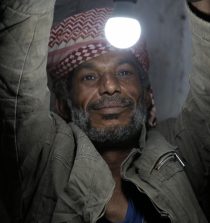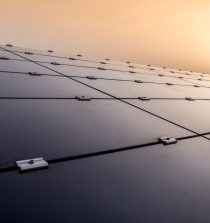By Juergen Voegele

In 2020, swarms of desert locusts descended on northern Kenya in the country’s worst locust infestation in 70 years. They ate crops and threatened the food security of 3 million people. Locusts brought similar devastation to some of the poorest countries in Africa, the Middle East, and South Asia, as governments and communities braced for the COVID-19 pandemic.
Why did this rare and widespread (and ongoing) infestation occur? The extent and intensity of this locust plague have been linked to climate change – the result of powerful cyclones in the Arabian Peninsula and heavy rains vegetating normally dry areas where locusts breed. Cyclonic winds helped the surging swarms travel to East Africa. Even as Kenya and other countries grappled with the pandemic, climate change added another layer of risk – and one that is expected to intensify in the future and hit the most vulnerable people the hardest.
Today, after 25 years of progress reducing global poverty, we are at a precarious moment. Poverty is on the rise. The pandemic is estimated to have increased the number of people living in extreme poverty by 88 million to 115 million in 2020 alone. Climate change could push up to 132 million additional people into poverty by 2030.
The world cannot get back on track reducing poverty without rising to the challenges of climate change. We must help the poorest countries adapt and become more resilient. This effort is not just about building dikes and cyclone shelters, but about improving the well-being of people – their health, education, access to clean water, sanitation, and jobs – as well as protecting biodiversity and the ecosystems that sustain lives and economies.
The World Bank’s International Development Association (IDA) is dedicated to supporting the poorest countries on all these fronts. For nearly a decade, IDA has made climate change a special focus of its assistance in response to growing demand from developing countries. Today, IDA considers climate risk in all its projects and works with partners to reach the poorest people, often in isolated communities and settings affected by fragility, conflict and violence. For example:
In northern Kenya, IDA is providing $43 million to respond to the locust invasion and help people affected by it. This assistance is being delivered through a climate-smart agriculture project that helps farmers enrich soil and adopt other sustainable land use practices. One of the project’s goals is to empower communities to invest in infrastructure that makes a difference in the lives of local people. In the village of Biliq, this has taken the form of a new system that catches and stores water for 1,000 people and their 9,500 livestock. Among other benefits, the rainwater storage system has helped women and girls avoid the daily search for water. These projects are part of a much larger effort, supported by IDA, to increase investments in infrastructure and services, help refugees and host communities, in North and North Eastern Kenya.
In Yemen, less than 10 percent of people have access to electricity after years of conflict. Healthcare, education and many other services have suffered terribly. The Emergency Electricity Access Project, in partnership with the United Nations Office for Project Services, is installing solar energy systems to power health facilities and schools. The project, backed by a $50 million IDA grant, will be expanded to hundreds of health facilities across the country and enable clinics to stock COVID-19 vaccines that require cold storage. This effort is among several responding to urgent needs in the country, from COVID-19 to urban services and the desert locust infestation.

In the Pacific Islands, which are facing rising sea levels and more frequent and more intense cyclones due to climate change, IDA is supporting disaster preparedness and resilience building. After Vanuatu was hit by Category 5 Cyclone Harold in April 2020, sustaining damage to roads, hospitals, schools, homes, crops and water infrastructure, the country was able to quickly access $10 million in emergency funds through a Disaster Risk Management Development Policy Grant with a Catastrophe-Deferred Drawdown Option (Cat-DDO), funded by IDA. Tuvalu also accessed emergency funds after it was hit by the Cyclone Tino in January 2020. The Cat DDOs complement the Bank’s Pacific Resilience Program supporting early warning systems, resilient infrastructure and fiscal resilience in these vulnerable countries.
These are just a few of the many ways IDA is supporting the poorest in the face of climate change challenges. We can and must do more to bring more innovation to the fight against climate change in the poorest countries. This includes a focus on the long term, and working to prevent crises by supporting the transition to a greener, more resilient, and more inclusive future. Millions of lives depend on it.
Source: World Bank
The blog is part of a series on ways to ensure a resilient recovery from COVID-19 in the world’s poorest countries. For the latest, follow @WBG_IDA and #IDAWorks.









Your article helped me a lot, is there any more related content? Thanks!
Your article helped me a lot, is there any more related content? Thanks!
A harmonious blend of local care and global expertise.
generic lisinopril tablets
A one-stop-shop for all my health needs.
They offer invaluable advice on health maintenance.
gabapentin 100 mg capsules
They have an impressive roster of international certifications.
Their global presence never compromises on quality.
where can i get lisinopril no prescription
Always attuned to global health needs.
They consistently go above and beyond for their customers.
does gabapentin cause kidney problems
Global expertise that’s palpable with every service.
Their international supply chain ensures no medication shortages.
parachuting gabapentin
They handle all the insurance paperwork seamlessly.